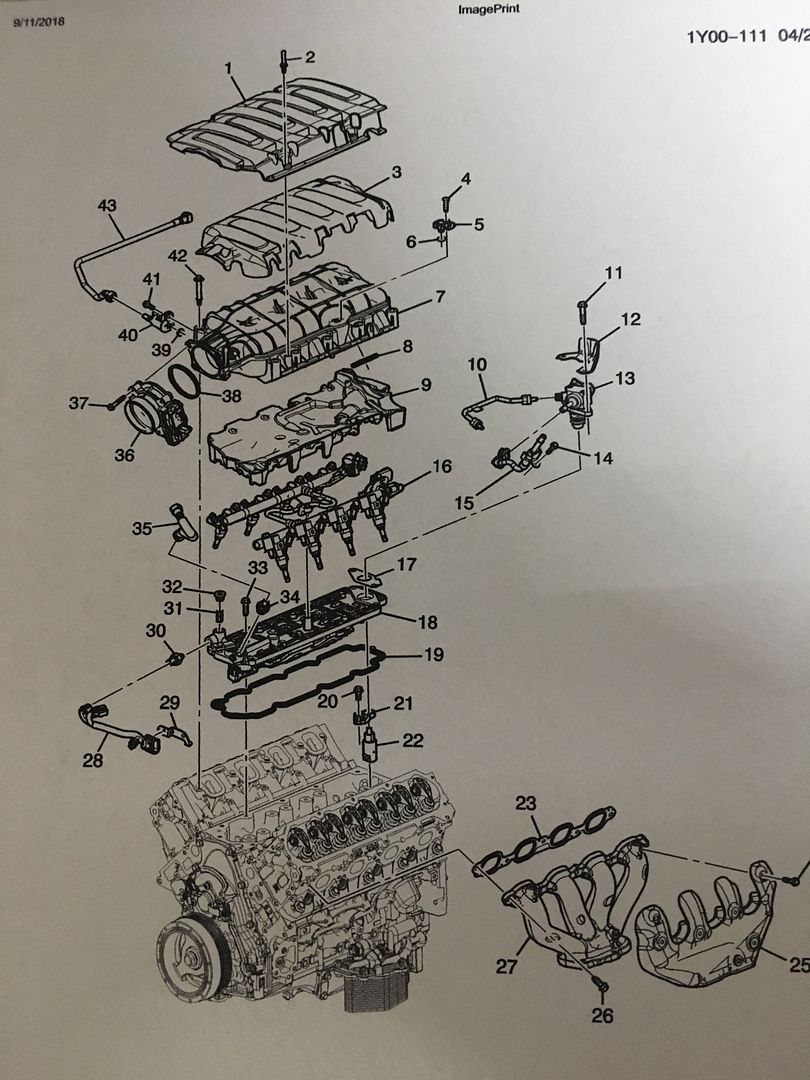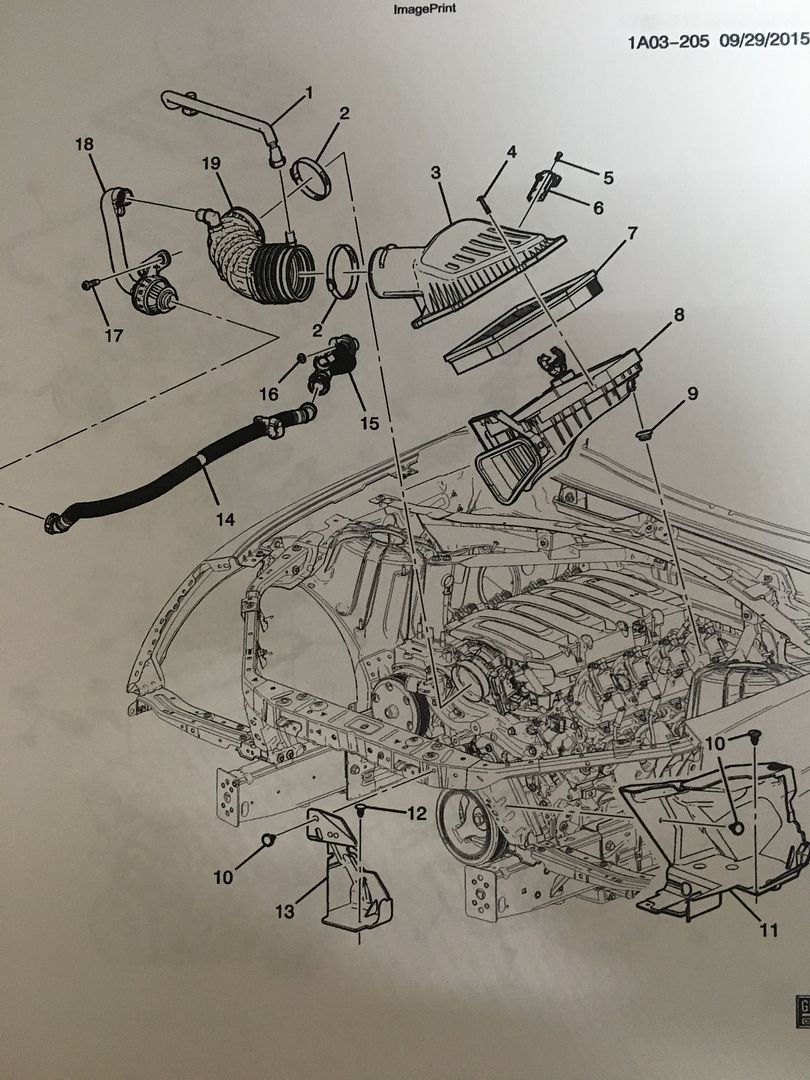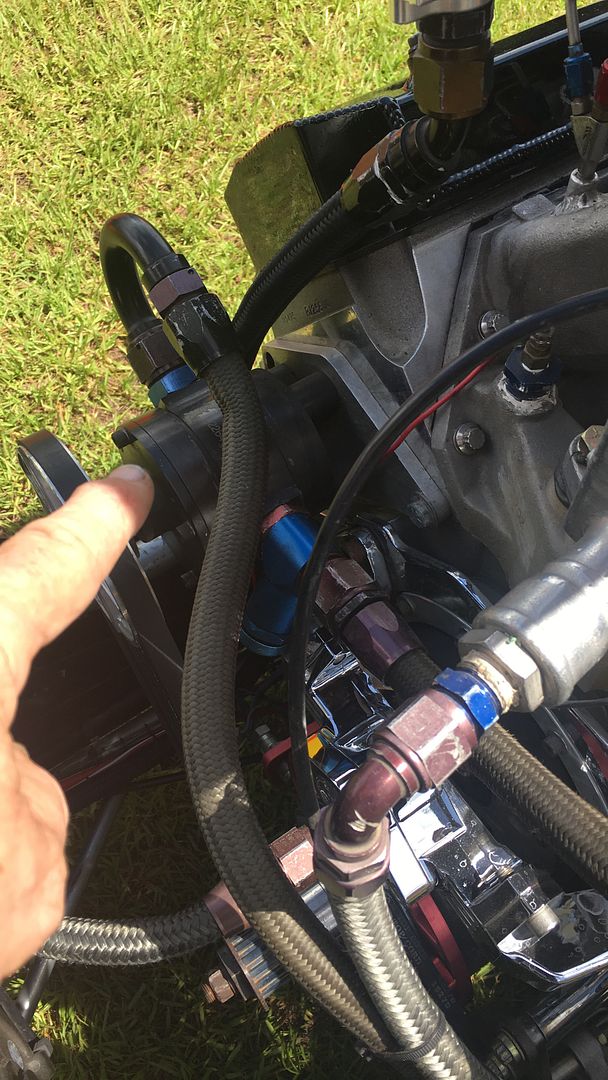You are browsing camaro6 

|
|
#1 |
 Drives: 2018 ZL1 Vert A10 Join Date: Jul 2017
Location: Houston
Posts: 471
|
LT4 PCV System
Does anyone have a diagram illustrating the factory PCV system? I'm hoping someone here has access to the factory service manuals with something like this in it.
Please dont turn this into another catch can thread. 
__________________
2018 ZL1 Vert - 854Whp / 791Wtq
2016 BRZ 2013 X5D 2005 STI 2001 2.5 RS Previous cars in chronological order 2016 GT350, 2014 MEV Rocket, 2013 Nissan Qashqai + 2, 1.6L Diesel, 2010 Nissan Note 1.5L Diesel, 2012 Dodge Ram 2500 6.7L Cummins, 2009 Subaru Impreza STI, 2005 Dodge Ram 1500, 2004 Mini Cooper S, 1997 Subaru Impreza Catalunya special Edition, 1992 Daihatsu Charade GTti, 1978 Mk1 Ford Fiesta |
|
|

|
|
|
#2 |
       Drives: '18 Zl1. '18 GT350. Join Date: Dec 2016
Location: Katy
Posts: 2,104
|
Get a catch can.
__________________
There's only 2 people I trust. 1 of them is me, the other's not you. 2018 Zl1. 1199 RWHP/931 TQ.
|
|
|

|
|
|
#3 |
 Drives: 2018 ZL1 Vert A10 Join Date: Jul 2017
Location: Houston
Posts: 471
|
__________________
2018 ZL1 Vert - 854Whp / 791Wtq
2016 BRZ 2013 X5D 2005 STI 2001 2.5 RS Previous cars in chronological order 2016 GT350, 2014 MEV Rocket, 2013 Nissan Qashqai + 2, 1.6L Diesel, 2010 Nissan Note 1.5L Diesel, 2012 Dodge Ram 2500 6.7L Cummins, 2009 Subaru Impreza STI, 2005 Dodge Ram 1500, 2004 Mini Cooper S, 1997 Subaru Impreza Catalunya special Edition, 1992 Daihatsu Charade GTti, 1978 Mk1 Ford Fiesta |
|
|

|
|
|
#4 |
       Drives: '18 Zl1. '18 GT350. Join Date: Dec 2016
Location: Katy
Posts: 2,104
|
__________________
There's only 2 people I trust. 1 of them is me, the other's not you. 2018 Zl1. 1199 RWHP/931 TQ.
|
|
|

|
|
|
#5 |
 Drives: 2018 ZL1 Vert A10 Join Date: Jul 2017
Location: Houston
Posts: 471
|
Seriously, no one has this? I'm interested in the operating parameters of the factory PCV valve underneath the supercharger. Under what conditions is it closed? Given it attaches directly to the bottom of the blower, it would seem that it is continuously seeing vacuum, and therefore open.
__________________
2018 ZL1 Vert - 854Whp / 791Wtq
2016 BRZ 2013 X5D 2005 STI 2001 2.5 RS Previous cars in chronological order 2016 GT350, 2014 MEV Rocket, 2013 Nissan Qashqai + 2, 1.6L Diesel, 2010 Nissan Note 1.5L Diesel, 2012 Dodge Ram 2500 6.7L Cummins, 2009 Subaru Impreza STI, 2005 Dodge Ram 1500, 2004 Mini Cooper S, 1997 Subaru Impreza Catalunya special Edition, 1992 Daihatsu Charade GTti, 1978 Mk1 Ford Fiesta Last edited by Ricco; 09-10-2018 at 11:11 PM. |
|
|

|
|
|
#6 |
     Drives: 2010 Camaro Join Date: Nov 2009
Location: Denver
Posts: 1,381
|
Currently we only have the installation video on our website and don't have a diagram.
We don't have a diagram, but can give a detailed description: Fresh filtered MAF metered air enters from the main intake air tube/bridge. It enters the plastic cleanside separator located on the front of the passenger side cylinder head. From here it splits and enters both valve covers. This air is pulled around the rocker arms, down the oil return passages and flushes and makes up for the foul/dirty vapors being evacuated (sucked out) from the valley where the vapors pass the internal baffle system under the valley cover. They exit the PCV barb located underneath the snout of the intake manifold pointing towards the driverside front of the engine compartment. They are then drawn into the intake manifold to be burned with the air/fuel mixture. That is it. Let me know if you have any other questions or need more detailed description of the function or location of any of its components.   Cheers! |
|
|

|
|
|
#7 |
     Drives: 2010 Camaro Join Date: Nov 2009
Location: Denver
Posts: 1,381
|
We dont have diagrams for the LT4, but clean/fresh is the same, but the foul/dirty is located under the blower itself and enters into the inlet housing out of sight. You need to lift the blower up to access the PCV cartridge and it takes a large allen socket to remove it. We make a billet diverter to replace it that allows the flow to be accessed from the front now.
 It is the yellow circle. The shiny barb above it is the OEM path to the blower inlet that is then blocked off. |
|
|

|
|
|
#8 |
 Drives: 2018 ZL1 Vert A10 Join Date: Jul 2017
Location: Houston
Posts: 471
|
Quote:
Under WOT conditions, we should expect the crankcase to be evacuated through all orifices, so via the PCV into the blower, but also back out of the valve covers and into the intake, again via the factory catch can. Likely around 10% of normal operation. Based on this, I'm now liking the MM catch can idea more and more. From what I understand the top mounted vent on his can is closed during normal operations (scenario 1 above) but opens any time there is positive pressure in the can (scenario 2 above). This to me seems to offer the best of both worlds, clean air being passed through the crankcase (90% of the time), but huge capacity to evacuate blow-by on high HP WOT pulls. I think in the past, I had been underestimating how much blow-by is produced on a 6.2L V8 running 1-1.5Bar of boost.
__________________
2018 ZL1 Vert - 854Whp / 791Wtq
2016 BRZ 2013 X5D 2005 STI 2001 2.5 RS Previous cars in chronological order 2016 GT350, 2014 MEV Rocket, 2013 Nissan Qashqai + 2, 1.6L Diesel, 2010 Nissan Note 1.5L Diesel, 2012 Dodge Ram 2500 6.7L Cummins, 2009 Subaru Impreza STI, 2005 Dodge Ram 1500, 2004 Mini Cooper S, 1997 Subaru Impreza Catalunya special Edition, 1992 Daihatsu Charade GTti, 1978 Mk1 Ford Fiesta |
|
|

|
|
|
#9 |
|
Dyno Show Queen LOL
Drives: 16 SS & 17 ZL1 Both Yellow Join Date: Jan 2014
Location: Houston
Posts: 4,345
|
Exactly... ^
But you will here that race teams make more power w a closed setup and that's a prehistoric way of doing things blah blah from Elite.. I don't know about you but the LS's in the copo's are a pretty new engine and they aren't running a closed pcv setup and they are a pretty bad ass team! If anything they looked to be a draft setup.. I like how it vents when needed as well.. its not just a ordinary filter on top it has a flap per say that will open when needed.. and the PVC is now in the can instead of under the blower.
__________________
 Kong Ported 2650, Crawford Racing Port Injection, Weapon X 112mm Adapter, NW112mm TB, Livernois Ported LT4 Heads, Lingenfelter GT32 stealth cam, Haltech Elite, and Carbon by Trufiber |
|
|

|
|
|
#10 | |
 Drives: 2018 ZL1 Vert A10 Join Date: Jul 2017
Location: Houston
Posts: 471
|
Quote:
__________________
2018 ZL1 Vert - 854Whp / 791Wtq
2016 BRZ 2013 X5D 2005 STI 2001 2.5 RS Previous cars in chronological order 2016 GT350, 2014 MEV Rocket, 2013 Nissan Qashqai + 2, 1.6L Diesel, 2010 Nissan Note 1.5L Diesel, 2012 Dodge Ram 2500 6.7L Cummins, 2009 Subaru Impreza STI, 2005 Dodge Ram 1500, 2004 Mini Cooper S, 1997 Subaru Impreza Catalunya special Edition, 1992 Daihatsu Charade GTti, 1978 Mk1 Ford Fiesta |
|
|
|

|
|
|
#11 |
|
Dyno Show Queen LOL
Drives: 16 SS & 17 ZL1 Both Yellow Join Date: Jan 2014
Location: Houston
Posts: 4,345
|
I'm just quoting Elite's words! and providing a recent example that doesn't back up what they claim!
__________________
 Kong Ported 2650, Crawford Racing Port Injection, Weapon X 112mm Adapter, NW112mm TB, Livernois Ported LT4 Heads, Lingenfelter GT32 stealth cam, Haltech Elite, and Carbon by Trufiber |
|
|

|
|
|
#12 |
     Drives: 2010 Camaro Join Date: Nov 2009
Location: Denver
Posts: 1,381
|
Copo's are run in stock and super stock and are NOT allowed the advantage of a closed evac system. They can only run a vented open system pre Stock and Super Stock rules as we always share. Top Fuel and Top Alcohol also do not run evac systems because they push most all the oil out in one run and the engine is rebuilt each run. The Copo's and others in these classes also have to change oil after EVERY race due to these rules allowing excessive contamination. The Mustangs, Challengers, etc. all cannot run an evac system either. Look at any of the classes above Stock/SS and ALL run vacuum evac systems:
   This is kinda like watching MSNBC or CNN, only take one sentence from our posts and then criticize it. We not only are a company of Engineers, we also have staff that are on Professional Race teams running NHRA in the same classes. We always provide facts anyone can easily verify and validate. Another motorsport is the base claimer engine classes in stock car racing are not allowed. It becomes an unfair advantage. And as always, it is easy to ask ANY technical questions and we will answer them. We will provide documentation as well so you don't have to take anyone's word for it. We are one of the ONLY company that does this. Most every other catchcan maker just gives generic "because" replies or some snake oil explanation that has no science backing it up. So have a civil dialog without name calling and insinuations and all can learn from this mostly overlooked aspect of today's engines. Ask technical questions and let's discuss any part of this. Cheers! |
|
|

|
|
|
#13 |
 Drives: 2018 ZL1 Vert A10 Join Date: Jul 2017
Location: Houston
Posts: 471
|
Quote:
 Having said that, just because 'racecars' do it doesn't mean everyone should. My two scenarios listed above can pretty much be reversed for race cars, if a race car isn't spending most of it's time at WOT then there is another issue  Anyway, the other point you make is that some race cars also use closed PCV systems where allowed, but in doing so, they also tend to use dedicated vacuum pumps and very large diameter hoses as can be clearly seen in the photos you posted. These pumps provide for a much greater scavenging affect than can be provided by engine vacuum, especially at WOT when vacuum is at it's lowest. The suggestion of course is that in a street car, there simply isn't enough vacuum available at WOT to evacuate all of the blow-by being produced by a massive (lets face it, American V8's are enormous) engine, especially once boost levels rise past 1bar (nothing scientific about that 1bar, just an educated guess based on experiences). Please feel free to continue with informative posts that use factual data to enhance everyone's understanding.
__________________
2018 ZL1 Vert - 854Whp / 791Wtq
2016 BRZ 2013 X5D 2005 STI 2001 2.5 RS Previous cars in chronological order 2016 GT350, 2014 MEV Rocket, 2013 Nissan Qashqai + 2, 1.6L Diesel, 2010 Nissan Note 1.5L Diesel, 2012 Dodge Ram 2500 6.7L Cummins, 2009 Subaru Impreza STI, 2005 Dodge Ram 1500, 2004 Mini Cooper S, 1997 Subaru Impreza Catalunya special Edition, 1992 Daihatsu Charade GTti, 1978 Mk1 Ford Fiesta |
|
|

|
|
|
#14 | |
     Drives: 2010 Camaro Join Date: Nov 2009
Location: Denver
Posts: 1,381
|
Thanks Ricco, There is no vacuum when you accelerate or got OWT as valve overlap caused reversion spikes cancel it out. That is why our unique system uses two separate evacuation suction sources and lines that are capable of the proper evacuation rate on these engines, and we do not use ours in full race applications. They need a belt driven vacuum pump and vacuum relief valve as shown in this video demonstrating venting VS pulling suction: Now back to our system. Here is how we provide the next best thing for street driven vehicles as most vacuum pumps will not last more than a few thousand miles on the street before we need to replace vanes, seals, and bearings. We use the intake manifold vacuum for idle, light cruise, and deceleration to provide the suction needed. We use inline billet checkvalves and dual outlets so that as soon as the primary valve detects low or no suction, it closes and the secondary valve opens and uses the suction generated by the venturi effect. This is just in front of the throttle body (upstream) as reversion pulses don't reach past the TB until well over 8k RPM's and we don't spin these street motors that high. We also include (unless the LT1 is factory equipped as the Camaro is) a cleanside separator so we can address the second path of ingestion. As our E2-X design is 95% effective compared to 15-30% for 95% plus of all other designs, there is no more effective solution period for the street. And we stand by that challenge as we have for years. When you let off throttle and IM vacuum returns, the secondary valve closes and the primary valve opens. This provides full time evacuation suction on the crankcase never allowing pressure to build in the first place (unless a breach in the piston/rings/cylinder wall occurs, and many have pinched or broken ring-lands and are not aware). The valves will open and close to always default to the strongest suction source available. We retain an emissions compliant closed system (except we are NOT CARB cert on the planet California yet). We maintain 100% MAF metered air for proper short term fuel trim tuning, and there is a slight increase in power due to the pistons not fighting pressure on the downstroke each cycle. So, it stops 95% of the oil and other unwanted substances from being ingested. It prevents pressure from building, it is easily reversed/removed if desired, it keeps the engine oil cleaner longer as most of the damage causing combustion by-products are flushed and removed before they can settle and mix with the engine oil VS stock where only at idle, light cruise, and deceleration does evacuation take place. We extend engine life with the removal of these substances (water, raw fuel, sulfuric acid, and abrasive soot/carbon and ash particles) and by removing most of what causes the intake valve coking, the engine retains it's power longer. As most "catchcans" have a capacity of 3-4 oz's vs our 16 oz's, you also have the total functionality of a patented design unequaled in the industry. As we have a Professional Drag racer on staff with decades of NHRA competition in multiple classes, we also have that edge we don't see from any others. We see plenty of "assumptions", but actual science and facts are what we use. We know all forms of crankcase evacuation from the early history of the automobile to the latest racing technology, because that is who we are. Let's continue this dialog for the rest that do care to learn. Far too often when we attempt to have an open discussion, as soon as it enters into technical discussion the insults and harassment begin. That does none any good. We have even seen competitors make videos where they took one of our systems, filled it with an epoxy like mix to clog the internals and then show a "flow test" using 1/2 half of the system filled with epoxy. (we eventually got the system returned and could not believe how dishonest this gets to stoop that low). Ask more, and include race and street applications if you like. |
|
|
|

|
|
|
|
|
|
Post Reply
|
|
|